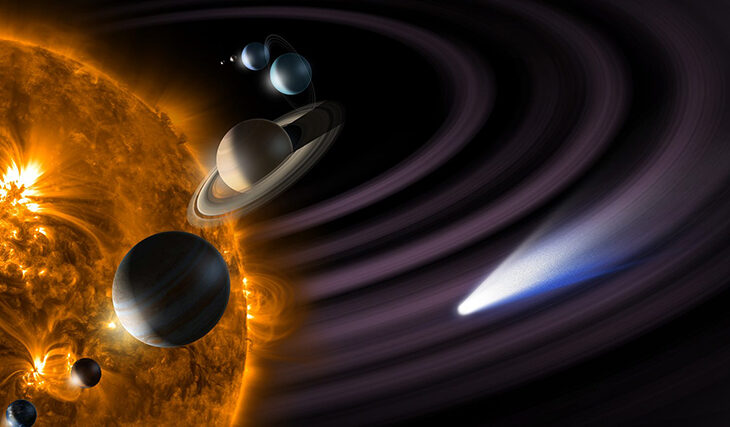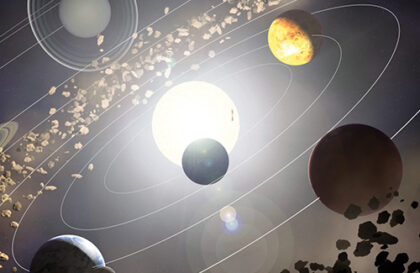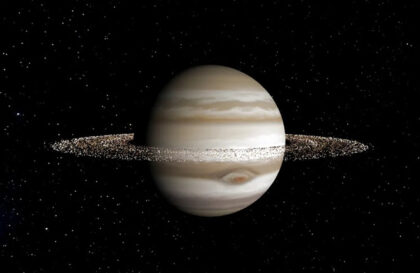In the past, we believed that our Solar System was fairly typical, categorizing all planets into a few main types: rocky planets similar to Earth and gas giants like Jupiter, with additional subcategories such as ice giants like Uranus and Neptune.
However, exoplanet research has shown that most of them have relatively large masses and short orbital periods around their stars, often falling in sizes between Earth and Jupiter. Approximately 35% of exoplanets are Neptune-like, 31% are rocky planets larger than Earth called “super-Earths,” and 30% are gas giants. Only about 4% resemble planets in our own Solar System.
The map of discovered exoplanets reveals several anomalies. Most planets are concentrated in areas observed by the Kepler telescope, which studied 150,000 stars over three years. Other clusters have been found by the K2 and TESS missions. Another cluster is near the Galactic center and was discovered through microlensing. These clusters do not reflect the actual distribution of exoplanets; they merely point to areas we have studied more intensively. It is believed that planets could be present in 80% of stellar systems.
A map of all known exoplanets. The red line marks the celestial equator, the magenta line marks the Ecliptic, and the green line marks the plane of the Milky Way. The highest density of known transiting planets is the location of the Kepler field.
It’s difficult to determine the exact number of planets in the Galaxy due to the limitations of current detection methods. On average, stars have between 4 to 20 planets, but this statistic doesn’t account for planets outside of star systems and unknown types of celestial bodies, including brown dwarfs and “unfinished” star systems. Most star systems, including our own Solar System, likely ejected a significant number of planets or proto-planets during their formation.
Estimates for the number of planets in the Galaxy vary widely. The total may be comparable to the number of stars, or it may exceed it by tens of thousands of times. Accurate determination is possible only through gravitational microlensing. Our Solar System is typical in terms of the number of planets, but unique in its combination of rocky and gas planets. In many other systems, giant planets and mini-Neptunes are commonly found. It’s also worth noting that the Sun is brighter and more massive than 95% of the stars in the Galaxy, and roughly every second star exists in multi-component systems of two or more stars.
The TRAPPIST-1 system has a record number of Earth-like planets, with temperature conditions similar to those in our Solar System.
As for the question of the possibility of life on the discovered 5,000 exoplanets, the answer remains unknown. However, among them, there are likely rocky planets situated at an optimal distance from their stars. If water is present on these planets, oceans are also possible. Moreover, some of them may have conditions similar to those that gave rise to life on Earth 4 billion years ago.
Most of the discovered exoplanets are either gaseous or resemble Mercury without an atmosphere. Rocky planets most often orbit cold M-class stars and have likely lost their atmospheres due to solar flares from their stars. So far, astronomers have not detected atmospheres on such planets, neither through direct imaging nor through transit spectroscopy. The question of whether they have biosignatures remains open.
NASA’s Wide Field Infrared Survey Telescope (WFIRST) is now named the Nancy Grace Roman Space Telescope, after NASA’s first Chief of Astronomy.
Credits: NASA
New telescopes, such as the James Webb Space Telescope, EUCLID, PLATO, the Giant Magellan Telescope (expected 2029), the Extremely Large Telescope (expected 2027), and the Roman Space Telescope (expected 2027), promise a revolution in exoplanet studies. They will allow us to measure the atmospheres of small planets, obtain their direct images, and gather more statistics. These data will help us better understand the conditions for the formation of rocky planets and the differences between “super-Earths” and “mini-Neptunes.” Combined research methods will provide information on the composition of these planets’ atmospheres, including possible traces of intelligent activity.
Image credit:
ttps://www.universetoday.com
https://www.researchgate.net
https://hubblesite.org
https://www.nasa.gov






